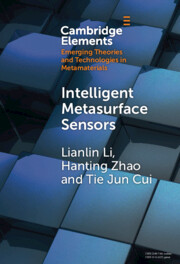Refine search
Actions for selected content:
2 results
Feasibility and validation of a novel mobility monitoring sensor in hospitalized patients: A prospective cohort study
-
- Journal:
- Journal of Clinical and Translational Science / Volume 9 / Issue 1 / 2025
- Published online by Cambridge University Press:
- 24 July 2025, e171
-
- Article
-
- You have access
- Open access
- HTML
- Export citation

Intelligent Metasurface Sensors
-
- Published online:
- 20 December 2023
- Print publication:
- 01 February 2024
-
- Element
- Export citation
